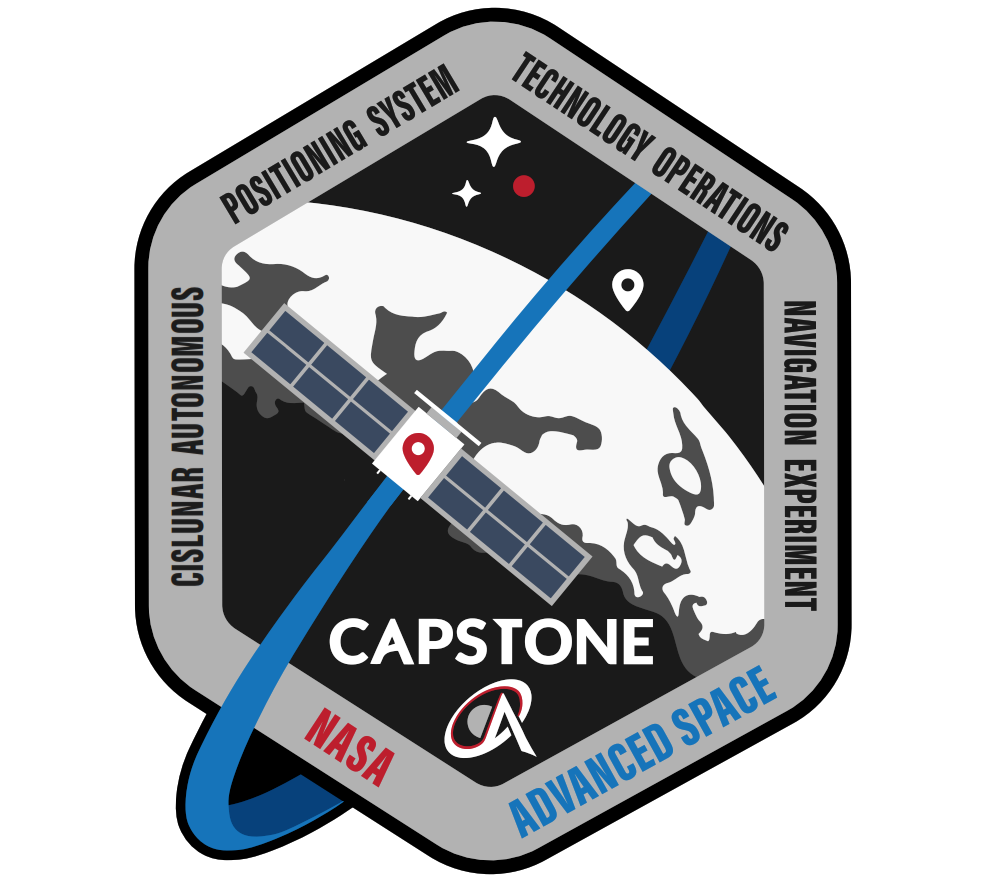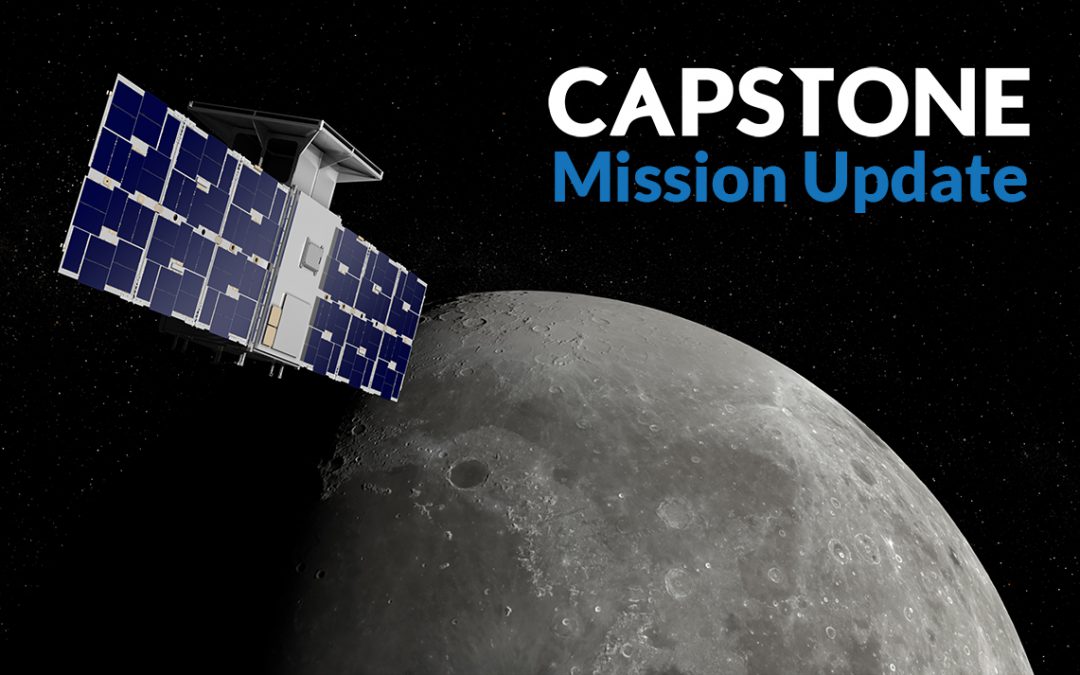The CAPSTONE Mission Team has been busy continuing to operate the mission in its planned Near Rectilinear Halo Orbit (NRHO). Thus far, since performing the NRHO insertion maneuver on November 13th, 2022, the spacecraft has spent 154 days operating in the NRHO completing 23 NRHO revolutions. During this time, the mission team has maintained knowledge of the spacecraft state well within the mission requirements using ground-based navigation tools and tracking measurements collected by the Deep Space Network including DSS-17 which is an affiliated site at Morehead State University in Kentucky. This navigation information has continued to support the design and execution of required maneuvers to maintain the orbit. Minimum maneuver size constraints have been sequentially reduced as the combined mission operations teams at Advanced Space, Terran Orbital, and Stellar Exploration continue to mitigate issues with a thruster valve. Since entering the NRHO the spacecraft has executed six Orbit Maintenance Maneuvers (OMM) using approximately 1.8 m/s of fuel. Although the mission plan was originally to do a maneuver every NRHO (approximately once a week), the higher burn threshold has reduced the number of maneuvers performed while also demonstrating the robustness of the stationkeeping strategy utilized by the mission which is the same strategy planned for the Lunar Gateway.
As we have been operating at the Moon, we have continued to learn and improve. Due to suspected radiation impacts likely caused by increased Solar activity, the system has been tested and continues to demonstrate resilience in the face of challenges. As designed, the system has tolerance for radiation impacts and the flight system performs checks to identify and resolve issues caused by single event upsets or other onboard avionics issues. This design work has been repeatedly validated over the past couple of months.
The mission team recently traveled to NASA’s Johnson Space Center to provide lessons learned and as-flown information to teams including the Gateway program, Artemis program, and several other groups. Over three days of presentations and discussions, over 300 people were involved in these meetings with attendees including NASA engineering, operations, contractors, and international partners. These exchanges focused on information sharing consistent with two of the CAPSTONE mission objectives related to demonstration of NRHO operations and informing future lunar exploration requirements and operations. In this way, CAPSTONE has continued to serve future NASA programs as a pathfinder.
Payload commissioning and evaluation has continued over the past couple of months. Specifically, the payload imager has been activated and taken its first set of pictures. The team will be working to improve imager performance and configuration in the coming weeks. This payload component will be used to generate publicly releasable imagery as well as to support technology demonstration efforts during future phases of the mission.
The mission team has continued to work on the crosslink demonstration in collaboration with the Lunar Reconnaissance Orbiter (LRO) mission operations team at NASA’s Goddard Space Flight Center. Software updates after the first attempt in January were developed and deployed. Further challenges were encountered with software updates in March and subsequently patched. On April 7th, the relative positioning of the CAPSTONE and LRO spacecraft were favorable for a crosslink at a much-reduced range compared to previous attempts. Data collected by the LRO spacecraft demonstrated a strong signal and performance consistent with signal lock from LRO on the CAPSTONE generated signal. CAPSTONE telemetry indicates that the crosslink signal was returned to the spacecraft. The mission team is currently working to process telemetry and identify if the crosslink measurements were collected as expected. This demonstration significantly improves on the observed performance from prior attempts. Coordinating this crosslink demonstration has provided significant lessons learned related to interdependent operations between spacecraft during phases of flight with high relative dynamics between two spacecraft at the Moon. As CAPSTONE traverses its closest approach to the Moon, and thus its closest approach to LRO, the limitations of antenna slew rates prevent some crosslink opportunities from being attempted. These design and operational lessons learned are being captured to support future crosslink activities at the Moon.
In the coming weeks a software update will be provided to the satellite that enables switching of the primary radio communications firmware. This radio firmware change will expose the functionality to begin demonstration of the CSAC enabled one-way uplink ranging. In collaboration with JPL and the Deep Space Network, this demonstration will deliver a second data type to the Cislunar Autonomous Positioning System (CAPS). The CAPS flight software, developed by Advanced Space, has been demonstrated on the CAPSTONE flight computer and is awaiting new data types for further demonstration. This future activity will further enhance the maturity of CAPS and provide future missions with onboard knowledge of the state to enable autonomy in other spacecraft functions.
The mission is approaching the end of its 6-month primary mission in May. At that point, the mission will transition to an enhanced mission phase for 12 months. During the enhanced mission, the team will focus on continued demonstration of technology and operations objectives while also evaluating opportunities for further automation and experimentation. After this 12 month enhanced mission, the program has disposal plans consistent with US and NASA policy. The spacecraft will have significant fuel reserves remaining and may consider additional operations if systems remain operational.
About CAPSTONE™: CAPSTONE Press Kit
CAPSTONE™ is owned and operated by Advanced Space. It is one of the first CubeSats to fly in cislunar space – the orbital area near and around the Moon – and demonstrate an innovative spacecraft-to-spacecraft navigation technology. The mission launched on June 28, 2022. Critical partners in the CAPSTONE mission include:

-
- NASA: CAPSTONE’s development is supported by the Space Technology Mission Directorate via the Small Spacecraft Technology and Small Business Innovation Research programs at NASA’s Ames Research Center in California’s Silicon Valley. The Artemis Campaign Development Division within NASA’s Exploration Systems Development Mission Directorate supported the launch and mission operations. NASA’s Launch Services Program at Kennedy Space Center in Florida was responsible for launch management. NASA’s Jet Propulsion Laboratory supported the communication, tracking, and telemetry downlink via NASA’s Deep Space Network, Iris radio design and groundbreaking 1-way navigation algorithms.
- Terran Orbital Corporation: Spacecraft design, development and implementation, hardware manufacturing, assembly, testing and mission operations support.
- Stellar Exploration: Propulsion subsystem provider.
- Rocket Lab USA, Inc.: Launch provider for CAPSTONE on a three-stage Electron launch vehicle.
- Space Dynamics Lab (SDL): Iris radio and navigation firmware provider.
- Orion Space Solutions (formerly Astra): Chip Scale Atomic Clock (CSAC) hardware provider necessary for the 1-way ranging experiment.
- Tethers Unlimited, Inc.: Cross Link radio provider.
- Morehead State University (MSU): Operates the newest “affiliated node” on the NASA Deep Space Network (DSN). Providing telemetry, tracking and control services for NASA and commercial space missions and to engage university students in deep space mission operations.
